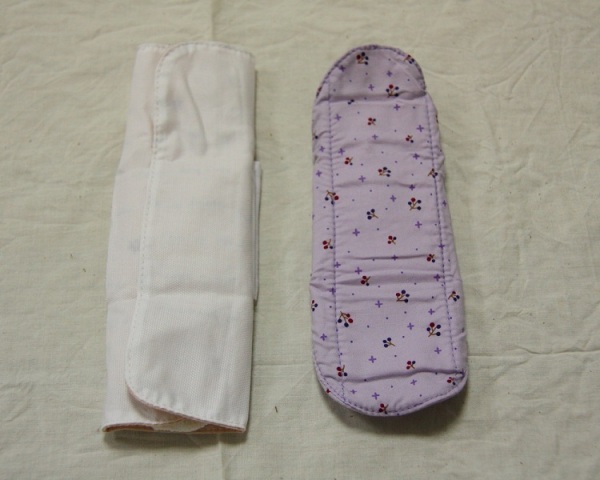A sanitary napkin forms an important part of gynecological hygiene. This article traces the history & origin of Sanitary napkins/ pads and provides interesting background information on them.
History Of Sanitary Napkins
Known as sanitary pads, sanitary towels or maxi pads, sanitary napkins form an important part of the gynecological hygiene of every woman. A sanitary napkin is a form of a porous item that has the capability of soaking the flow of blood. Hence, menstruating women wear them during their periods. Some women also prefer using them while recovering from vaginal surgeries, childbirth or abortion. Today, there are different varieties of disposable sanitary pads available in the market, ranging from ultra-thin panty liners to oversized maternity pads. From reusable ‘rags’ to disposable ‘napkins’, menstrual pads have indeed come a long way. Read in further to get some interesting background information on them. 

Image: hjw223@flickr
The Origin
If we trail back to history, we will see that women have used a variety of menstrual protection, over the years. The ‘Museum of Menstruation’, located on the suburbs of Washington DC, offers some interesting insights. Some of the most common forms of protection were grass, rabbit skins, sponges, rags, menstrual aprons, homemade knitted pads or other kinds of absorbents. However, disposable sanitary pads started to be available in the markets only around the year 1895.
The Idea
Disposable pads owe their origin to nurses, who first came up with the idea of holding the flow of menstrual blood with the help of available wood pulp bandages in the hospital. The manufacturers of bandages borrowed the idea and produced pads made from handy products that were inexpensive enough to be disposed. Slowly, other manufactures joined the line. However, their prices were sky-high, which made them exclusive toiletries of rich women.
The Form
The first sanitary pads were in the form of a cotton wool or similar stringy rectangular structure, sheathed with an absorbent liner. The pad was shaped in such a way, so that it could be easily attached to a special girdle or belt. However, due to its inconvenience, the girdle gave way to an adhesive strip on the bottom of the pad for proper attachment to the undergarment. Soon, belted sanitary napkins became outmoded and stick-on pads became popular.
The Modern Era
Today, sanitary napkins are available in a wide variety of patterns, designed taking into consideration both comfort and style. Some major innovations include quilting of the lining, introduction of ‘wings’, fragrant pads, introduction of panty liners and reduction of pad thickness. Nowadays, most women even have their own standard sanitary brands. Besides, most brands come in very nominal prices, which have made sanitary napkins a commonplace household item.
Today, sanitary napkins are available in a wide variety of patterns, designed taking into consideration both comfort and style. Some major innovations include quilting of the lining, introduction of ‘wings’, fragrant pads, introduction of panty liners and reduction of pad thickness. Nowadays, most women even have their own standard sanitary brands. Besides, most brands come in very nominal prices, which have made sanitary napkins a commonplace household item.
See also
More from iloveindia.com
- Home Remedies | Ayurveda | Vastu | Yoga | Feng Shui | Tattoos | Fitness | Garden | Nutrition | Parenting | Bikes | Cars | Baby Care | Indian Weddings | Festivals | Party ideas | Horoscope 2015 | Pets | Finance | Figures of Speech | Hotels in India : Delhi | Hyderabad | Chennai | Mumbai | Kolkata | Bangalore | Ahmedabad | Jaipur
- Contact Us Careers Disclaimer Privacy Policy Advertise With Us Lifestyle Sitemap Copyright iloveindia.com. All Rights Reserved.







